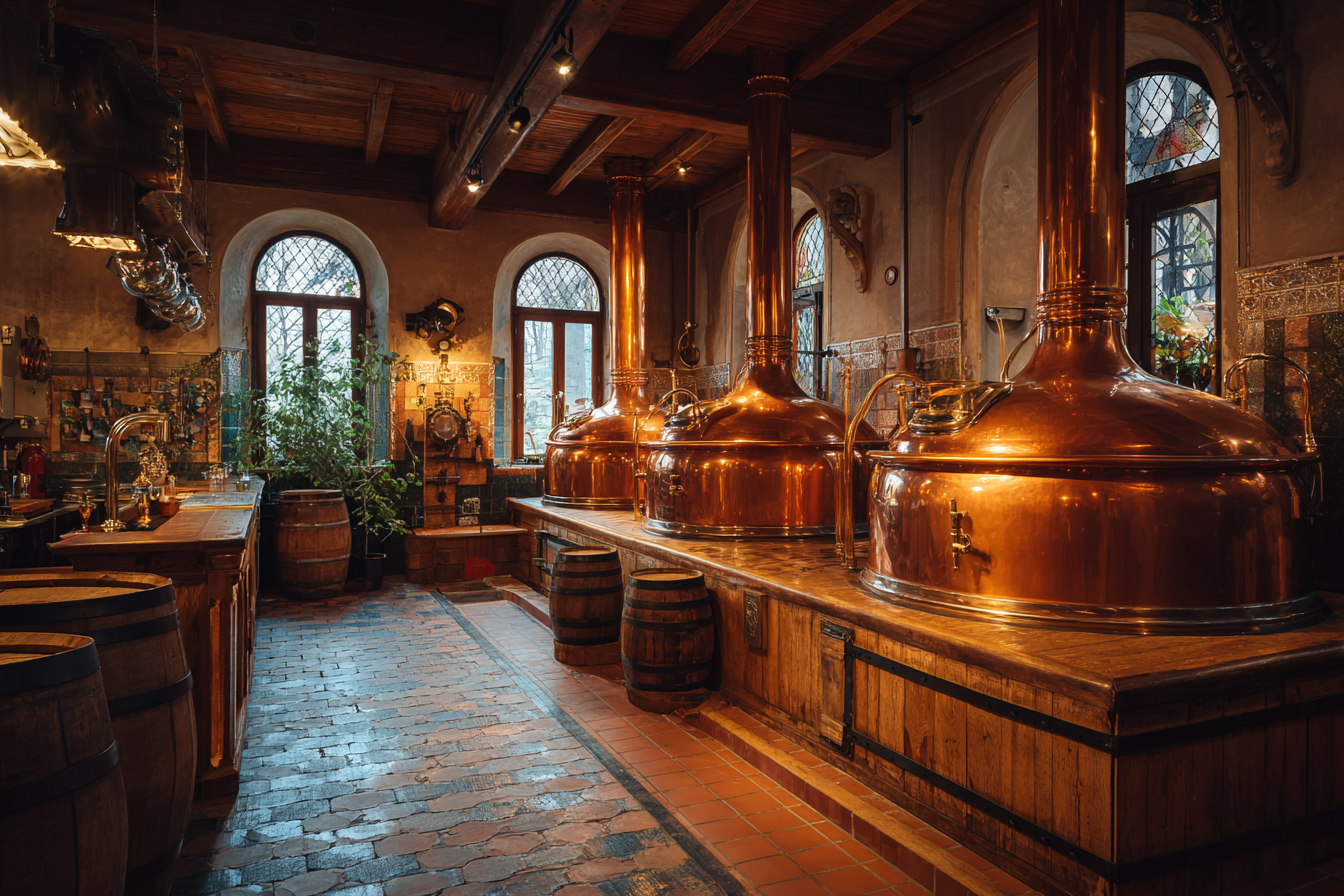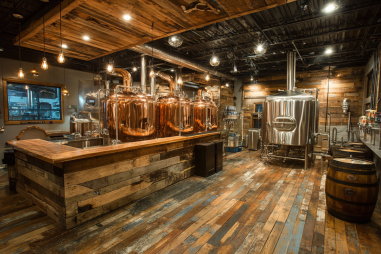When it comes to iconic beer styles, Czech Pilsner stands out as a legendary example of brewing excellence. Known for its golden hue, crisp taste, and refreshing character, this beer has transcended borders and captivated beer lovers around the world. But what exactly goes into creating this classic brew? The Czech Pilsner brewing process is a fascinating blend of tradition, precision, and craftsmanship that has been perfected over centuries. In this article, we’ll explore every step, ingredient, and technique that makes Czech Pilsner a timeless favorite.
Understanding Czech Pilsner
Czech Pilsner, also known as Pilsner Urquell style, originated in the city of Plzeň (Pilsen) in the Czech Republic in 1842. It holds the distinction of being the first pale lager, setting the standard for pilsner beers worldwide. Unlike its German counterparts, Czech Pilsner is distinguished by its balanced maltiness, moderate bitterness, and soft water profile. This style is renowned for its smooth, slightly sweet malt backbone paired with the aromatic and mild bitterness of Saaz hops, resulting in a beer that is both flavorful and exceptionally drinkable.
Key Ingredients in Czech Pilsner Brewing
The foundation of any great beer starts with high-quality ingredients, and for Czech Pilsner, the choices are deliberate and specialized.
- Pale Pilsner Malt: The malt used is typically a soft, slightly sweet pilsner malt, which provides the pale golden color and the malt backbone that is characteristic of the style.
- Saaz Hops: This noble hop variety is native to the Czech region and prized for its gentle, earthy, herbal aroma and mild bitterness. Saaz hops are essential to achieving the distinctive flavor profile of the Czech Pilsner.
- Yeast: Traditional Czech lager yeast strains are employed, contributing clean, subtle fruity esters and facilitating slower fermentation, which enhances the beer’s complexity.
- Water: The water in the Pilsen region is soft, with low mineral content. This softness is crucial as it allows the malt and hops to shine without interference from harsh minerals, giving the beer its smooth and mellow character.
The Czech Pilsner Brewing Process Step-by-Step
The brewing of Czech Pilsner requires meticulous attention to detail with each stage contributing to the final result.
Milling and Mashing
The process begins with the milling of malt. Pilsner malt is gently crushed to ensure an optimum surface area for enzymatic activity during mashing. The mash process often involves a traditional decoction mash, which is a key differentiator in the brewing method.
Boiling and Hopping
After mashing, the wort is separated and brought to a vigorous boil. Saaz hops are added at different intervals during the boil to contribute bitterness, flavor, and aroma. Patience is essential here as the timing and quantity of hop additions influence the iconic hop character of the beer.
Fermentation
The cooled wort is then transferred to fermentation tanks, where the specific Czech lager yeast strain is pitched. The fermentation temperature is carefully controlled, generally between 8-12°C (46-54°F), to achieve a clean but flavorful fermentation profile. This slow, low-temperature fermentation allows complex flavors to develop without unwanted off-flavors.
Lagering (Cold Conditioning)
Once primary fermentation concludes, the beer undergoes a cold maturation phase known as lagering. This long, cold storage period — often lasting several weeks to months at near-freezing temperatures — clears the beer of residual yeast and proteins, resulting in a smooth, crisp finish with enhanced clarity.
The Unique Aspects: Decoction Mashing and Lagering
Two distinctive techniques set Czech Pilsner apart from other lagers and even other pilsner styles: decoction mashing and extended lagering.
Decoction Mashing
This time-honored method involves removing a portion of the mash, boiling it, and then returning it to the main mash. This raises the overall temperature in a controlled manner and promotes caramelization of malt sugars, resulting in enhanced malt complexity and rich body. Decoction mashing adds a toasty, slightly sweet character that balances the hop bitterness and contributes to the signature flavor depth of Czech Pilsner.
Lagering
While many lagers undergo some degree of cold conditioning, Czech Pilsners benefit from prolonged lagering periods. This slow cold maturation at temperatures near freezing not only mellows the beer but also develops its clean, crisp, and highly drinkable profile. It also allows for the natural carbonation process to finalize, contributing to the beer’s effervescence.
Why Fermentation Temperatures Matter
Fermentation temperature is a critical factor in the brewing of Czech Pilsner. Unlike ales that ferment at warmer temperatures, lagers like Czech Pilsner require cooler environments to maintain their signature clean taste. The traditional fermentation range of 8-12°C helps the yeast work slowly and steadily, minimizing harsh esters or fusel alcohols that could overpower the delicate malt and hop notes. This gentle fermentation enhances subtle fruity aromas, which harmonize beautifully with the Saaz hops and malt sweetness.
Quality Control and Traditional Practices
Brewing Czech Pilsner is as much about preserving tradition as it is about quality. From the sourcing of ingredients — particularly the Saaz hops harvested by hand — to the brewing equipment and processes, many brewers remain committed to age-old practices. Precision in temperature control, timing, and ingredient ratios is strictly monitored to ensure consistent results.
Moreover, traditional breweries often use wooden fermenting vessels or open fermentation tanks, which can add unique characteristics to the beer. Natural carbonation during lagering is also favored over forced carbonation to maintain the beer’s delicate mouthfeel. Rigorous tasting and testing occur throughout the brewing stages, ensuring that every batch upholds the hallmark quality that Czech Pilsners are known for.
How the Brewing Process Influences Flavor
The brewing process plays a pivotal role in crafting the distinctive flavor profile of Czech Pilsner. Each stage, from selecting soft water to the choice of malt and hops, as well as the decoction mash and slow fermentation, interlocks perfectly to produce a beer that is crisp yet full-bodied, mildly sweet with floral hop notes, and refreshingly balanced.
The decoction mash brings malty depth and enhances mouthfeel, while Saaz hops offer a restrained, noble bitterness with herbal nuances. The use of traditional lager yeast strains ensures a clean flavor that allows these elements to coexist harmoniously. Finally, lengthy lagering polishes the beer to clarity and smoothness, delivering the refreshing finish that makes Czech Pilsner a favorite among brewers and drinkers alike.
Understanding these intricate brewing techniques offers not only an appreciation for Czech Pilsner but also insight into how tradition and science blend to create one of the world’s most beloved beer styles.







